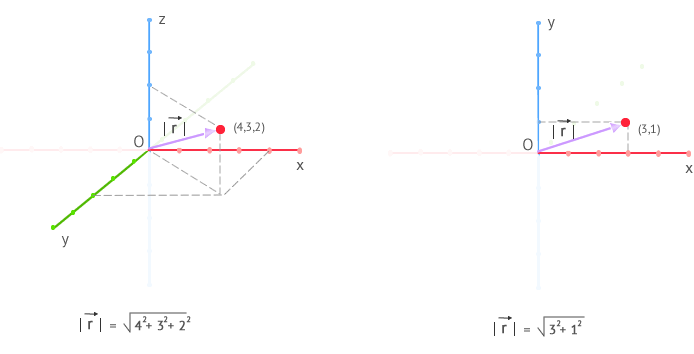Position Vector
In physics, the position, the position vector or the location vector of a body with respect to a coordinate system is defined as the vector that links the location of the body with the origin of the coordinate system. In Cartesian coordinates, it is expressed as:
Where:
- x, y, z : Are the coordinates of the position vector
The unit of measurement for position in the International System is meter [m]. Like all vectors, the position vector in physics has direction and magnitude (also known as size, modulus or length of the vector). The magnitude of the position vector is the distance of the body to the origin of the reference system. To calculate it you can use the following formula:
For those problems where you are working in fewer dimensions, you can simplify the previous formula by eliminating unnecessary terms. This way, the position equation:
- In two dimensions becomes
- In one dimension becomes
We have represented a position vector in three dimensions (left) and another in two dimensions (right) in the following figure:


